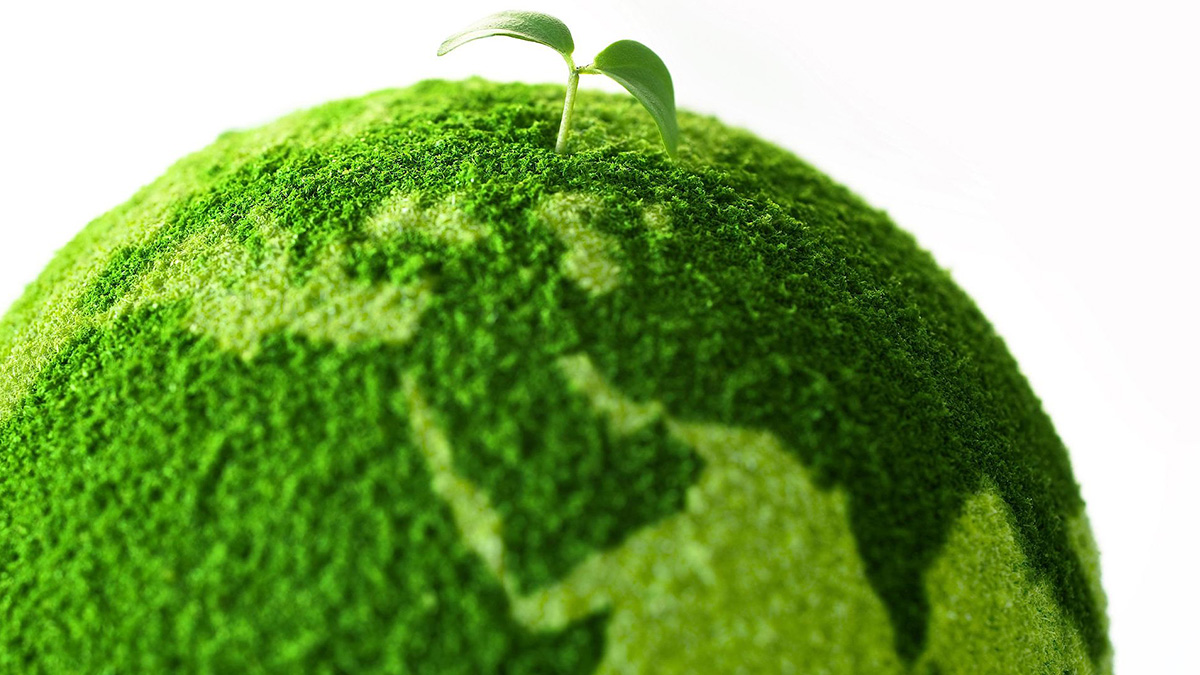The world attaches great importance to carbon reduction initiatives, and the EU promotes a policy of carbon emission tariffs which will affect the global business economy.
EU Green New Deal and carbon reduction targets:
Since the Industrial Revolution, humans have been using fossil fuels such as coal and oil, which emit large amounts of carbon dioxide. The concentration of carbon dioxide in the air in 2020 is 1.5 times what it was before the Industrial Revolution, and the concentration continues to increase. Global warming has brought about climate change, and extreme weather has caused millions of people to suffer and hundreds of billions of dollars of losses every year.
Due to the looming climate crisis, governments around the world have announced carbon neutrality, that is, they will no longer increase carbon emissions after 30 years, and "carbon payment" has become an important economic means to encourage carbon reduction. Since the European Union launched the Emissions Trading System (ETS) in 2005, companies with excess carbon emissions have had to pay a tariff, and companies with successful carbon reductions have reaped profits, inducing companies to pay attention to carbon reduction. However, this tariff, which has reached 2000 Taiwan dollars per ton of CO2 emissions, has driven an outward migration of high carbon emission industries to areas free of carbon emission tariffs, causing the pollution of the environment continue. This migration has been called carbon leakage.
Climate change is a global issue. While the European Union is successfully reducing carbon emissions, other countries' carbon emissions are increasing, prolonging the climate crisis. The primary objective of CBAM is to prevent carbon leakage in the EU, to ensure that climate policy is effective. The EU hopes to exert global influence to urge manufacturers in other countries and regions to reduce emissions. The design of CBAM is to make imported products faithfully reflect the EU's carbon pricing, target high-carbon emission industries, improve the EU's emissions trading system, and comply with the international trade rules of the World Trade Organization (WTO).
What is the EU Carbon Border Adjustment Mechanism (CBAM)?
To prevent industrial carbon leakage and promote the low-carbon transformation of global industries, the EU proposed the Carbon Border Adjustment Mechanism (CBAM) plan, which regulates that if carbon-intensive products are imported into the EU, CBAM Certificates must be purchased before they can be sold to the European market. The program is suitable for products with high carbon leakage risk such as cement, fertilizer, steel, aluminum, and imported electricity. It is expected to take effect on January 1, 2023, with a three-year initial trial implementation phase. The CBAM will be officially implemented in 2026, and EU importers will start paying border carbon fees after 2026.
The European Commission announced the "Fit for 55" climate change plan in July 2021, stating that the 27 EU countries will achieve a collective goal of reducing net greenhouse gas emissions by 55% by 2030 compared with the 1990 carbon reduction standard. Among the policies to be implemented, countries around the world are most concerned by the Carbon Border Adjustment Mechanism (CBAM). Trading partners will bear the same carbon cost as industries in the EU, discouraging industries from moving to other countries with looser carbon regulations. Carbon reduction can be sustained, and the competitiveness of domestic industries can be maintained as well.
The EU is expected to carry out a three-year trial from 2023, initially requiring imported steel, aluminum, cement, fertilizer, and power products to declare carbon emissions. After the carbon border adjustment mechanism is officially implemented in 2026, importers will need to purchase certificates as payment for the carbon emissions of imported products. The price will be calculated based on the average closing price on the EU's weekly carbon auctions. This price will be determined by the interest in import and export of related products. If the producing country has levied a carbon fee or implemented a carbon emissions trading system, the products imported into the EU will be exempted from carbon tariffs. To avoid violating the WTO's trade discrimination clause, the EU can deduct the EU's free audit quota for the carbon content of imported goods. If the carbon content is lower than the free audit quota, the purchase of CBAM certificates can be exempted.
With the rising awareness of net-zero carbon emissions, 73 regions in the world have proposed net zero emissions targets, and the EU is the most active among them. To achieve this goal, we actively propose the comprehensive policy package of Fit for 55, which strikes a careful balance between carbon pricing, environmental goals, fuel and emission standards, and support measures. A key element of the Fit for 55 policy is the CBAM carbon pricing proposal, aimed at dealing with the risk of carbon leakage, maintaining the competitiveness of the EU's domestic industries, and inducing foreign trading partners to reduce the carbon footprint of their products to meet the EU's low-carbon standards. The goal is to move towards the auction system as much as possible, and completely replace the EU's free carbon rights allocation trading system (ETS) by 2035. This will allow market mechanisms to better determine the carbon price, encouraging enterprises to actively cooperate with carbon reduction. If carbon reduction goals are met, hopefully the goal of keeping the global temperature rise at 1.5°C, set by the Paris Agreement, can be achieved.





.jpg)








